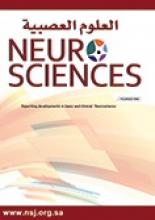Abstract
OBJECTIVE: To examine the changes of glial fibrillary acidic protein in the hippocampus after whole brain irradiation of adult rats.
METHODS: Forty-one male Sprague-Dawley rats (180-220 g weight and 6-8 weeks) were divided into the 9 irradiation subgroups, sham, and control groups. Their whole brain was irradiated by a single dose of 2, 10, and 30 Gy. At one day, one week, and one month after irradiation, reverse transcriptase-polymerase chain reaction assay was used to semiquantitatively analyze the expression of glial fibrillary acidic protein messenger RNA, and immunohistochemistry was performed to detect glial fibrillary acidic protein-positive cells. This study was carried out at The Second Affiliated Hospital of Soochow University, Jiangsu, China between October 2008 and November 2009.
RESULTS: No obvious changes were found between the control and 2 Gy irradiation groups. However, glial fibrillary acidic protein messenger RNA levels were increased after one day and reached a higher level one month after 10 and 30 Gy irradiation. A significant increase in glial fibrillary acidic protein-positive astrocytes was detected one month after 30 Gy irradiation.
CONCLUSION: Astrocytes may play an important role in the mechanisms underlying radiation-induced brain injuries in the early stages.
- Copyright: © Neurosciences
Neurosciences is an Open Access journal and articles published are distributed under the terms of the Creative Commons Attribution-NonCommercial License (CC BY-NC). Readers may copy, distribute, and display the work for non-commercial purposes with the proper citation of the original work.






